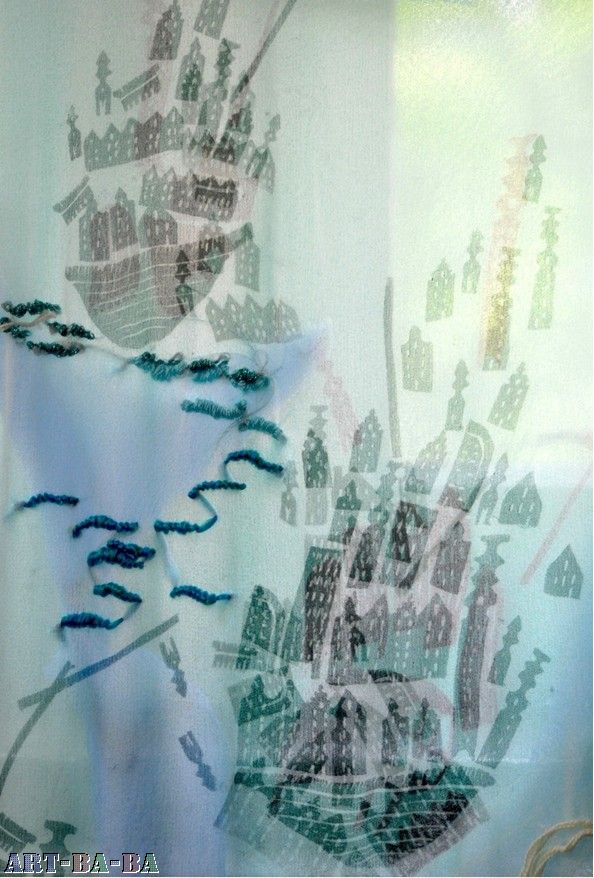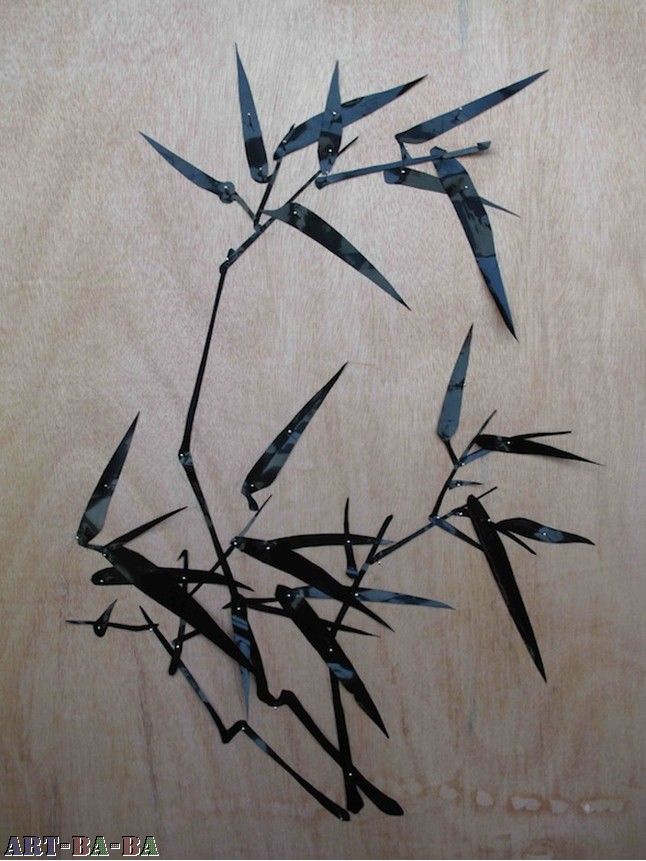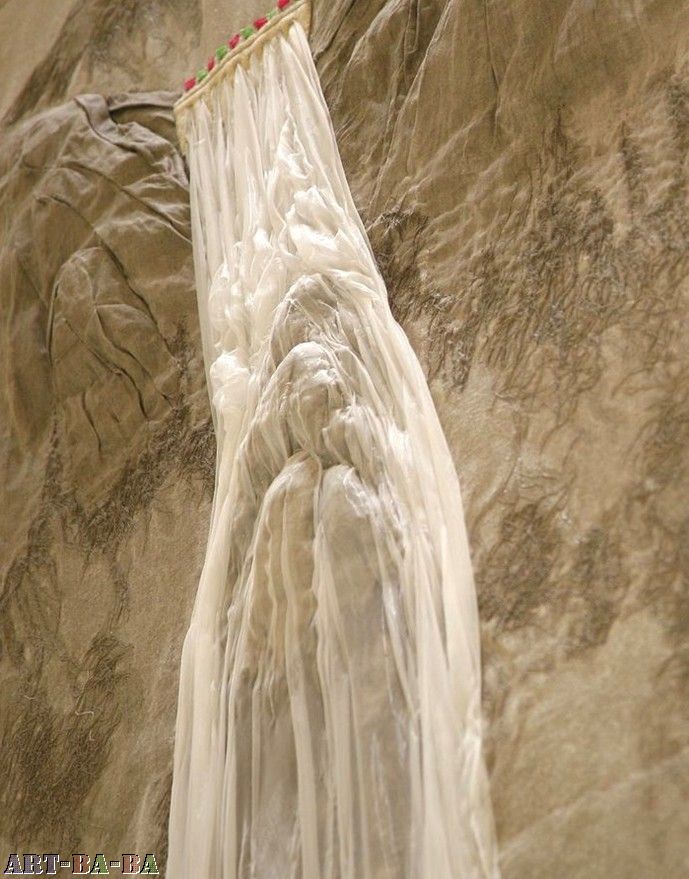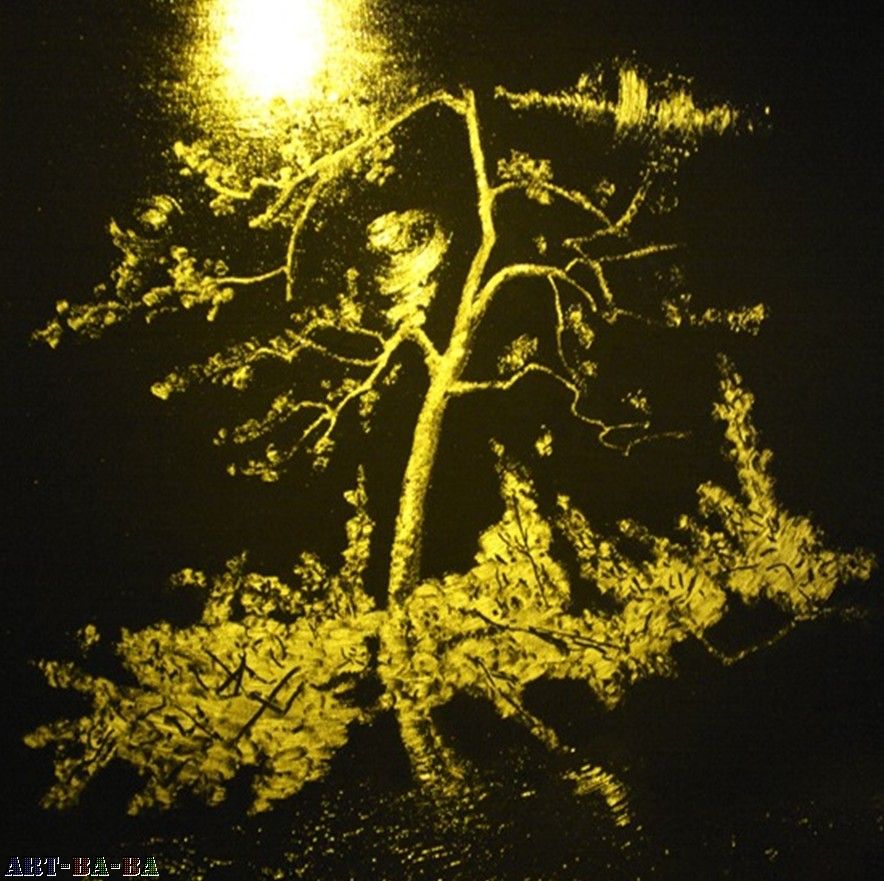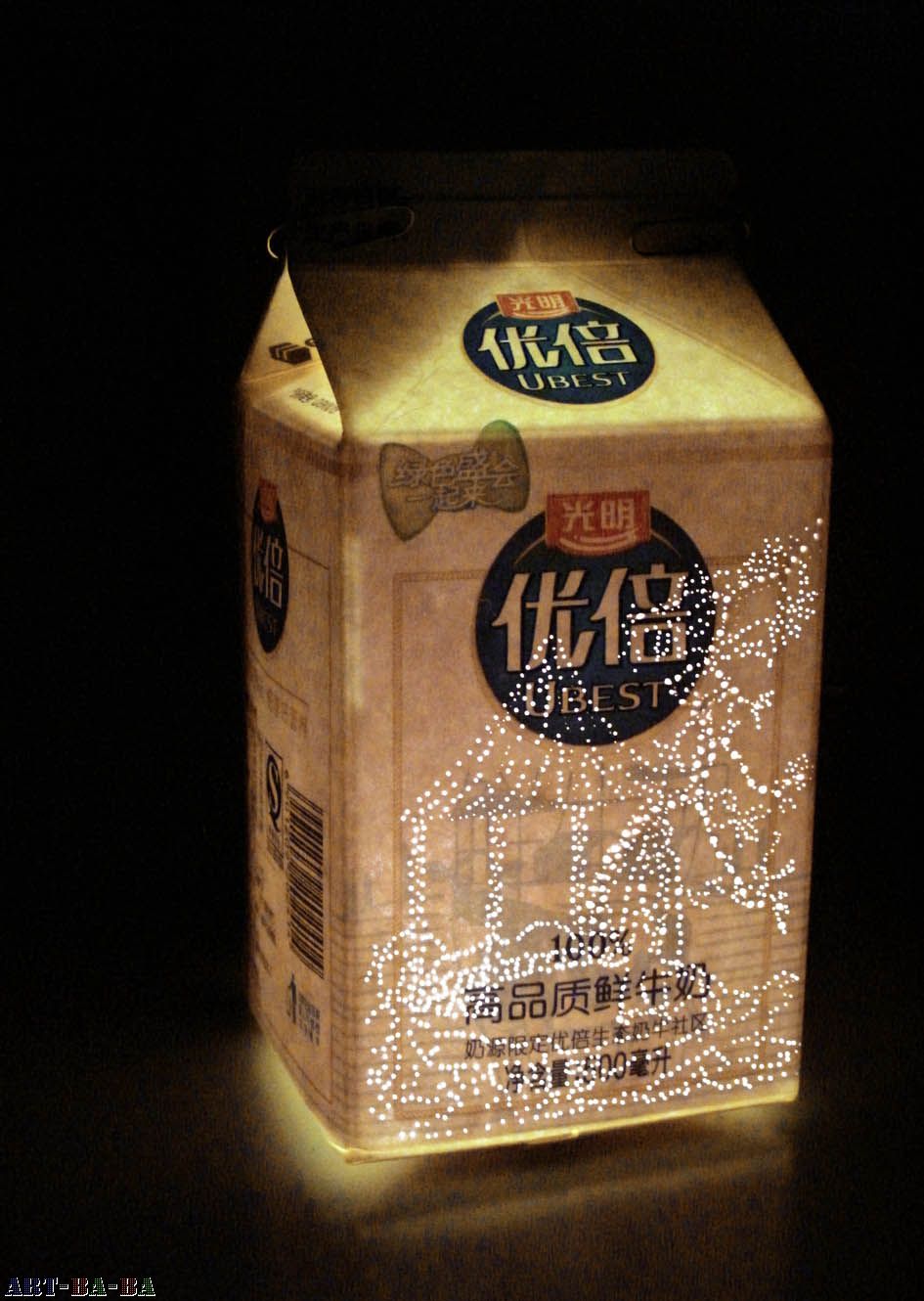向文人学习
开幕式和导览
OV画廊新闻稿
2010年9月9日— 2010年10月17日
贵宾预览:9月9日星期四下午5-8点(仅限预约)
开幕式:2010年9月11日星期六
导览:2010年9月11日星期六下午4点
几乎所有的艺术家在工作室里都会准备一套传统茶具,随着客人的到访以泡茶的方式进行款待:烧开热水,将头泡茶水过滤到茶盘中,经过第二次浸泡后小口地啜饮,轻轻吹散热气、饮下,然后啧啧赞叹茶的品质并再次斟满。
传统文化通常在多数艺术家的心中占据着崇高的地位,文人画家则代表了这种文化的缩影。自汉代起,古人为了区分于宫廷画师,开始探索将自我感受融入风景画的形式。他们精通律法、诗词、书法和哲学,著名的道家和儒家思想就是在当时诞生的。
他们中的许多人曾担当领导者和道德仲裁者的角色,而其隐士般的行为则更被众所周知-倾向远离社会罪恶归隐山间,忘我地置身于艺术与思考之中。
“向文人学习,”是8位艺术家对当代社会中文人概念和文人传统的一种审查。
将高尚的文人文化与混乱无序的现实构成反差,是史金淞这件暴力学作品的主题。艺术家用北京拆迁居民区的混凝土废墟特制成假山的样子(就像那种典型的中国园林装饰),然后在上面打孔以创造出一种凹陷的肌理效果,表现了一种灭绝性的暴力。
艺术家阿部着眼于玩山水文字的位移概念。这位来自日本的艺术家,现居住于荷兰的平原地区。作品探索的是水在荷兰地理环境中体现的专政问题。这件作品由多层次的纺织材料制作而成,上面绘制了高耸起伏的岛屿,船只以及用麻胶版画描绘出来的荷兰建筑。作品表达了人与自然之间的关系,也表现出对文人问题的独特见解。
以瓷和树脂作为雕塑作品材料的艺术家钱嵘,同样运用水的比喻来探索文人价值和当代社会之间的冲突关系。一条河单向流动,钱嵘承认人虽然不能逆转时间,但我们仍然能遵循文人的价值观以及他们的生活方式,譬如说独立思考。在他的作品中,船的象征意义传达出文人理想在现代思潮中充当的掌风舵的角色。
陈航峰探索的是一种稳定与变革的观念,表现文人价值在中国社会中盛与衰的现象。作品利用“四君子”这一传统题材,用黑色塑料袋碎片制作成兰花和叶子等植物的形状,然后钉在木板上(类似昆虫标本固定在泡沫板上的效果),传达出死亡的概念。作品旁边安装了一台迷你风扇,树叶迎风而颤沙沙作响,随着定时器的中止,它们便恢复到原来的形状。
意大利艺术家Girolamo Marri结合文人文化的探索,对西西里海岸的斯特朗博利火山岛进行思考,透过这片仍然处于活跃期的火山,沉思人与自然之间的危险关系和文人生活方式的可能性。装置上的画和物体似乎在询问:我们进入世外桃源后是否真的能从中获得哲学启示,还是碍于现代性的干扰以至于这种寻求是徒劳的?
计文于&朱卫兵这件惊人的织物雕塑展现的是传统山水的景象,突兀的水坝出现在瀑布的顶端,水倾泻而下,中间是一位类似寻求文人意境的观赏者骑坐在石头上,面对山凝视。艺术家表现的不仅是人控制自然的愿望(例如盆栽或中国园林),也是对自然的日渐疏远-这是艺术家几年来持续探索的主题。
油画家史晶进一步发展逃避的主题,带观众进入清晰的精神境界。作品以黑白颜料进行单色表现,并用倾斜的笔触勾勒。画面在灯光的映射下呈现出一棵松树倚靠悬崖的消瘦模样。松树比喻了文人的生活方式,平静长寿和不屈不挠-这些无疑是成为文人的奥妙所在。
同样关注文人化生活方式的还有高铭研的新装置作品,在生活物品内部装有发光灯泡,并在物体表面上打孔成为山水的画面,然后堆满整个房间。通过这件作品,艺术家想表现的是人们对当代艺术的态度已经从以往的文人经验(如在一个干净纯白的高雅空间内对艺术进行膜拜)转化成为一种新的概念,例如吃饭喝酒、品茶等这些与生活融为一体的方式。
媒体咨询
林白丽
+86 13916 373474
+86 21 5465 7768
rebeccacatching@ovgallery.com
展览日期
2010年9月9日至10月17日
贵宾预览:9月9日星期四下午5-8点(仅限预约)
对外开幕:9月11日星期六
作品导览:9月11日星期六下午4点
绍兴路19号丙近陕西南路和瑞金二路
+8621 5465 -7768
Learning from the Literati
Opening and Curatorial Tour
OV Gallery Press Release
September 9, 2010-October 17, 2010
VIP Preview: Thursday, September 9, 5-8pm (RSVP only)
Opening: Saturday, September 11, 2010
Curatorial Tour: 4pm, Saturday, September 11, 2010
No contemporary artist’s studio is complete without a traditional tea set – with the arrival of guests signaling the beginning of an elaborate ritual of heating water, dumping out the first round of tea through the grates of the tea board, steeping, sipping, draining, whiffing, praising the quality of the tea and beginning the cycle again.
Traditional culture often holds an esteemed position in the minds of many artists, and the epitome of that culture is the literati painter. As early as the Han Dynasty, these men defined themselves from the court painters by bringing a sense of personal expression into their depictions of the landscape – they were renaissance men well versed in law, poetry, calligraphy and philosophies such as Daoism and Confucianism.
Many played roles as leaders and moral arbiters in their communities, but in general they are known for their hermit-like behavior – their tendency to turn away from the evils of society and head to the mountains where they would lose themselves in thought and art.
In “Learning from the Literati,” eight artists examine what it means to be a literati painter and explore the legacy of the literati in contemporary society.
Shi Jinsong expresses the contrast between the noble literati culture and our chaotic and often fractured reality. The artist has created specially crafted scholars rocks (the kind that typically adorn Chinese gardens) made from pieces of concrete rubble from the demolished neighborhoods of Beijing. Shi Jinsong has perforated them with a drill to create a pockmarked look – that classical texture so prized by the literati but which represents the violence of being uprooted.
Artist Sayaka Abe looks at the idea of displacement, playing with the words shanshui (“water and mountains,” a synonym for Chinese traditional landscape painting). A Japanese artist, now based in the decidedly flat Netherlands, Abe explores the tyranny of water in the context of the Dutch terrain in a post-Copenhagen world. In her deeply layered textile work, lino-block prints of Dutch architecture piled into boats form towering islands/mountains, which look at man’s relationship to nature – a typical concern of the literati.
With a series of sculptures in porcelain and resin Artist Qian Rong, also uses the metaphor of water to explore the conflicted relationship between literati values and contemporary society. A river is something that flows one way, and though Qian Rong admits that we cannot reverse time, we can still emulate the literati through pursuing values such as independent thought. In his work, the symbol of the boat conveys the notion that literati ideals may act as an anchoring device to weather the tides of modernity.
Chen Hangfeng also explores notions of change and stability – in a work that examines the waxing and waning of literati values in Chinese society. The work consists of depictions of plants such as orchid and bamboo, “the Four Gentlemen” of literati lore, rendered in snippets of black plastic bags. The leaves of the plants are affixed with pins (somewhat like a dead scarab beetle pinned to a piece of Styrofoam), which convey notions of deadness. A row of mini fans mounted on the side of the work causes a periodic rustling of the leaves, yet despite these wayward modern disturbances, when the wind stops, the leaves always return to their original position.
Italian artist Girolamo Marri takes his exploration of literati culture to Stromboli, a volcanic island off the coast of Sicily. Surrounded by still active volcanoes, Marri had the chance to contemplate the perilous relationship between man and nature and also the feasibility of a literati lifestyle. His installation – a collection of drawings and objects – asks the question: can we really escape into the wilderness to gain philosophical enlightenment from nature or is this quest rendered futile by the distractions of modernity?
Ji Wenyu and Zhu Weibing look at this desire for escape in a striking cloth sculpture. The work features traditional shanshui mountain scenery marred by the presence of a dam at the top of the waterfall. In the middle of the stream is a man sitting astride a stone gazing up towards the mountain. Here they are looking at not only our desire to control nature (a precedent seen in bonsais or in Chinese gardens) but also our estrangement from nature and desire to commune with nature – a theme they have been exploring in their work over the past few years.
Painter Shi Jing furthers this theme of escape by transporting the viewer to an abyss of deep contemplation with his monochrome canvases. His work consists of black paint raked into patterns that, under the right lighting conditions, reveals the image of a wild and emaciated pine tree posed on the edge of a cliff. Here we can see the tree as a metaphor for the literati lifestyle of quietude, longevity and perseverance – qualities no doubt needed to survive the hermetic existence on the mountaintop.
Also looking at the literati lifestyle is Gao Mingyan with a new installation piece – a reconstructed room filled with gathered objects, which have been perforated with a pin in the pattern of a shanshui painting. A light placed inside these objects allows the image to be illuminated. In this work, Gao hopes to create a contrast between our experience of viewing contemporary art (as something to be revered in a sterile white cube) and the literati experience of art, which was an integral part of their lives, something as normal as eating, drinking or sipping tea.
Press Inquiries
Rebecca Catching
+86 139 167 35537
+86 21 5465 7768
rebeccacatching@ovgallery.com
Exhibition Dates
September 9-October 17, 2010
VIP Opening: Thursday, September 9, 5-8pm (RSVP only),
Public Opening: Saturday, September 11, 2010
Curatorial Tour: 4pm, Saturday, September 11, 2010
19C Shaoxing Lu, between Shanxi Nan Lu and Ruijin Er Lu
+8621 5465 -7768